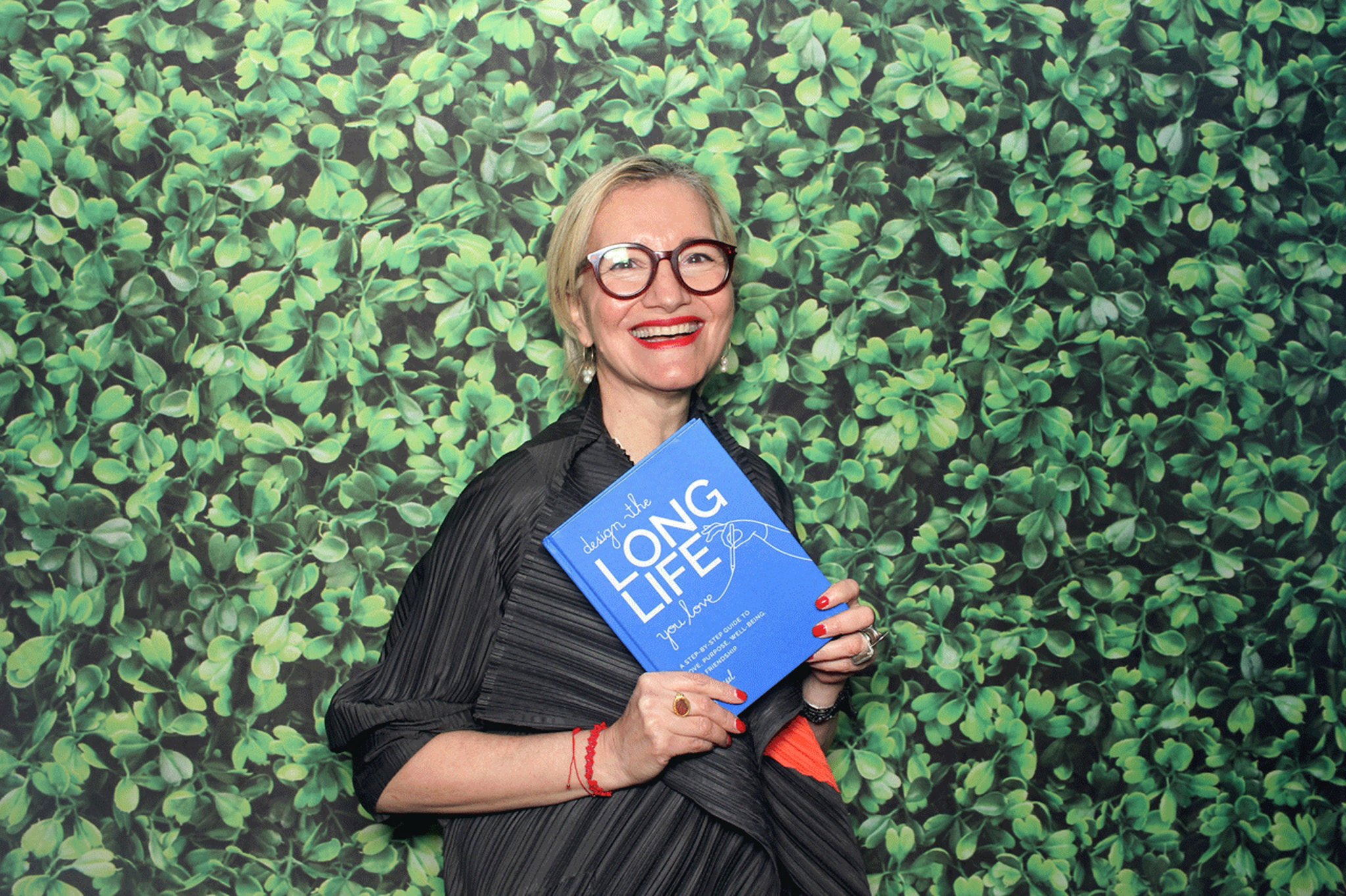
Ayse Birsel made a name for herself designing products for popular brands: a peeler for Target, a toilet for Toto, an office system for Herman Miller. Her work is so iconic, you can find it in the permanent collection at the Museum of Modern Art. But when she hit middle age, she decided to turn her creative mind to an unexpected product—life, specifically, the design of longer, more satisfying lives.
After a year of research with 250 adults over the age of 60 and a sojourn in her native Turkey where elders are revered, Birsel distilled her findings into a playful new book and companion workbook, Design the Long Life You Love: A Step-by-Step Guide to Love, Purpose, Well-Being and Friendship.
The book approaches the topic of longer lives in an accessible, inspiring manner, with minimal text and whimsical drawings. Birsel spoke with Fortune Well about good design for longer lives, why she's a fan of cross-generational friendships, and the striking parallels between early adulthood and late adulthood.

You and your multigenerational design partners refer to older people as the “astronauts of life, going where no one has gone before.” In a society that prioritizes design for aging well, what kinds of products and services would exist?
Today we have an ageist marketplace. What we need is an inclusive one.
Half of every dollar is spent by someone who is 50 or older. Add to that the average life expectancy in the US—80 for women and 74 for men—and you have these savvy, sophisticated consumers who have 20 to 30 extra years to live and who expect to continue having access to beautiful, intuitive products and services.
My ideal is to have an integrated, intergenerational society where brands like Nike, Tinder, and Target invest in good design and innovation for younger and older consumers equally, which is good for business and our society.
Consider the company Papa.com, which provides older people companionship and care by connecting them to younger people. Imagine Papa turning that idea on its head where care and companionship can flow in both directions: young to old but also old to young to provide companionship and care for young people struggling with mental health issues and loneliness, especially post-pandemic.
One of the counterintuitive things I talk about in my book is how similar 20 and 60-year-old people are. Based on this, Yubo.live, the friendship app that serves a young audience, could expand to an older audience and mix it up age-wise.
What is something unexpected or surprising that you learned from your experiment inviting people over 65 to codesign with you for a day?
The older adults we were codesigning with told us, “If you want to understand what we want, think no further than what you want—love, purpose, well-being, and friendship. We are the same. What’s different is what we need to do to get them.”
For me, it was also a personal wake-up moment. To think we all want the same things regardless of our age fills me with optimism for my future self.

You swear by collecting friends who are older or younger. Why are you such a champion of cross-generational friendship?
Diversity leads to richness. This is true for the diversity of race, gender, or culture. It is also true for the diversity of age.
When you have older and younger friends, they open up your viewing angle and help you see the bigger picture. This allows you to see new dots. When you start connecting the dots in new and different ways, they lead to new ideas. When you have new ideas, you have hope. When you have hope, you have the courage and optimism to live an original life.
You say your native Turkey “reveres elders,” while the U.S. “adores its youth.” How might a society marry the best of both cultures?
I have this mental image of village squares in Greece, Italy, and Mexico, where grandparents, parents, and their children come together under a tree. Where can different generations in the U.S. come together to play, eat, work, and learn? What are our trees?
We are starting to do this but have yet to reach scale. Still, I am optimistic that there’s a groundswell in the works as more and more baby boomers explore new solutions.
Joanna Drake and Julie Wroblewski are co-founders of Magnify, investing in companies that reimagine life for modern families from childbirth to end-of-life.
Entrepreneurs like Brian Park at Hank and Chip Conley at the Modern Elder Academy (MEA) are creating new friendship structures, or what I call friendship factories.
Multigenerational housing is also becoming more common. Companies like Nesterly and Silvernest bring together older adults who have space and need companionship with younger people who need affordable housing solutions.
Cynics might say that your expansive approach to long life is a luxury when so many are aging with health and financial challenges. What do you say to the naysayers?
None of the 250 participants in my research—who came from diverse, middle-income communities within metropolitan, suburban and rural settings across the country, from New York to LA to Mississippi—would dispute the difficulties and challenges related to health, family, finances, and social life inherent in living longer. But they wouldn’t accept a reductionist viewpoint as representative of who they are either. Instead, they would find it old-fashioned.
People today are more optimistic about living long lives. They don’t see their lives as shrinking. Instead, they see their lives as expanding and growing. According to the very people who are leading long lives, living longer is thrilling.
You draw a parallel between early adulthood when people are contemplating leaving home for the first time and late adulthood, when many are approaching the empty nest, retirement, or other significant life transitions. What do these two life stages share?
Would you be surprised if I said sex, drugs, and rock and roll (or love of music)? Plus, roommates, downsizing, living frugally, making new friends, learning new skills, and traveling.
Name a practice you have adopted in your own life as a result of writing this book?
One of the advantages of a long life is learning to love ourselves and have more self-compassion. But what if we can learn this early on? Luckily this is a learned skill. You can try it too. At the end of each day, tell yourself, “I love you.” Do this for a minimum of twenty-one days, until it becomes a habit.
Marci Alboher is a vice president at CoGenerate, a national nonprofit connecting generations to solve problems and bridge divides. She is also an author, most recently of The Encore Career Handbook: How to Make a Living and a Difference in the Second Half of Life. In her free time, she walks and photographs the streets of NYC and collects older and younger friends.







